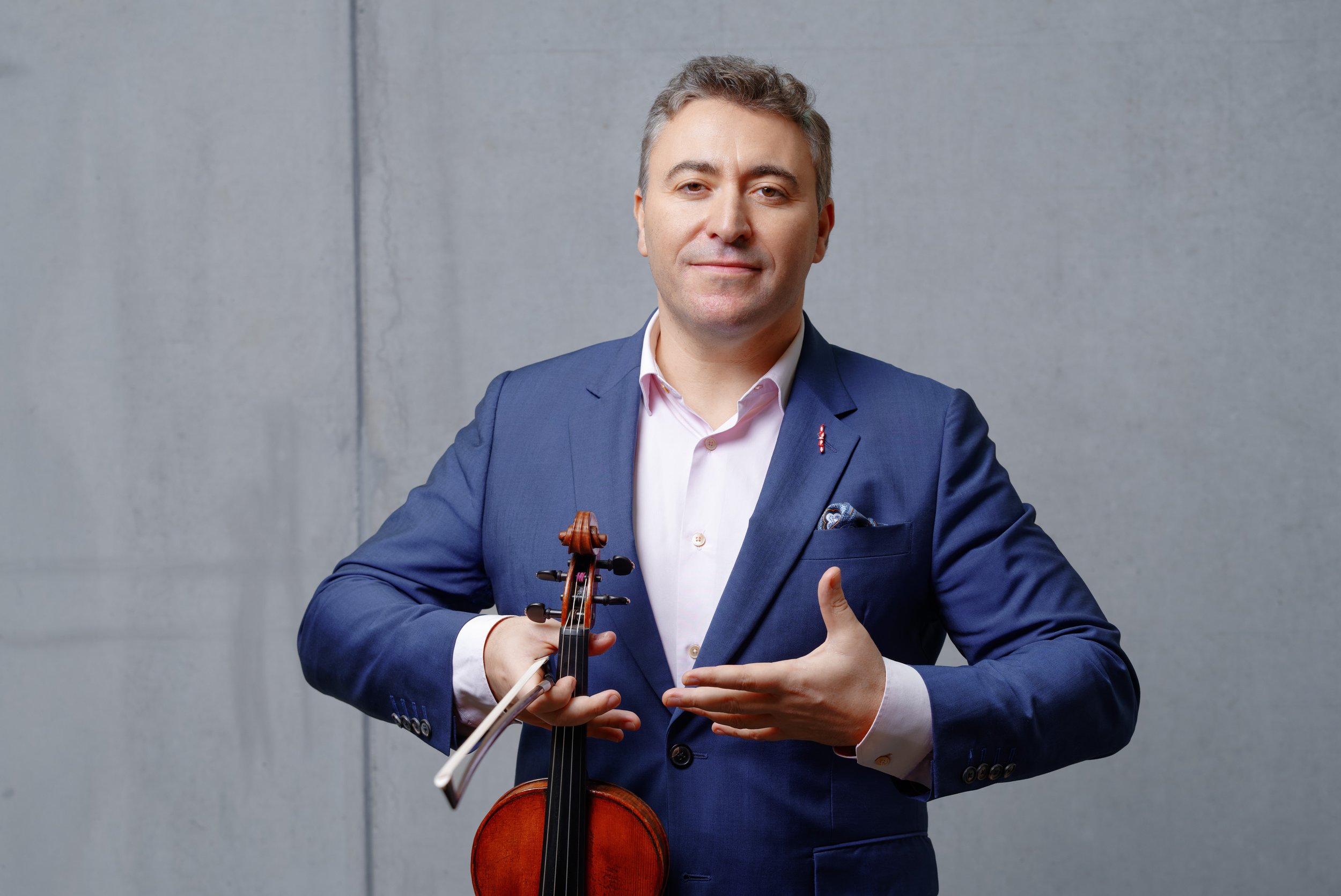
Vengerov’s Views
8 part exclusive educational teaching series
Part 7
Breathing to make music and stay relaxed
Photo © Christian Schneider
Introduction
Playing violin is like aerating a glass of wine - everything must breathe. As wine is exposed to oxygen, aromas and flavours are released, adding to the depth and complexity of flavour. On the violin, allowing the instrument to breathe means letting it vibrate naturally, so the overtones add depth, volume and complexity to your sound.
Breathing well when playing also adds meaning to the musical message, and helps the body stay relaxed. It is something which is easy to forget about, in amongst the myriad technical and musical challenges we deal with when we play, but is very important for any player to understand. In this post I will share with you some recommendations for how to help the music, your instrument and your body breathe naturally.
Breathing during pauses
“During pauses, you should also make music.”
Pauses in music are to breathe, not to stop. Just as when we speak, or sing, we take a breath when we need to. Taking a breath adds to the sense of what we are saying (or singing) - it gives the listener the chance to absorb what was just said, and the speaker (or singer) the chance to prepare for what comes next. So, even though there is no sound during a breath, there is still something happening during this break which adds meaning to the overall message.
It is just the same when we play. When the composer writes a pause or rest, or even just a subtle indication via phrasing, this does not mean you should stop, and then restart - it is a sign for you to take a breath. (Of course, there may be exceptions to this, for example a general pause for dramatic effect; by analysing the structure of the music you will be able to judge whether or not this is the case.)
Understanding the role of a pause or rest is essential to be able to create longer phrases and build more complex musical ideas. If you do not breathe during a pause, the music will stop. This could result in breaking a longer musical line into disjointed single elements which are hard for the listener to connect - not a satisfying musical experience. It would be like inviting a friend to join you on a nice long walk in the park, but instead you compel them to sit down on every single bench along the way - not a very satisfying walk!
By breathing during pauses, you will be able to build more interesting and complex ideas, and it will be easier for the listener to follow the message you are trying to convey.
What does breathing mean in practical terms, as a violinist?
“When we play violin, we breathe with our right hand.”
As an instrumentalist, we work with the instrument we play, not only our body. So it is not as straightforward as literally taking a breath, like a singer would. We need to understand how to translate this into the body language of our instrument. As violinists, we draw sound from the violin with the bow, and so the right hand is like our lungs.
There is a golden rule to keep in mind: if the music should continue, even during a pause, then the movement of your right hand and arm should continue too. If your bow hangs still in the air, or on the string, then the music will stop - this would be like a paraglider trying to stay aloft with no wind.
Let go of any tension in your right hand, continue the movement of the bow in the air even if it leaves the string, and keep your right hand and arm moving naturally. You can imagine your elbow breathes, and that your arm is like the wing of a bird taking flight.
As well as your right hand, you should also let the instrument breathe to get a vibrant sound. This means not pushing inside the string too much with pressure of the bow, using bow speed instead to create more sound. Pressing into the string can choke the sound and kill the overtones. Let the string vibrate naturally, and the sound and the instrument will ring freely.
Breathing to stay relaxed and keep a good sound
“Before you start to play, breathe in, breathe out - and only then, begin.”
For a good sound, and to keep your body relaxed, it is also important to know how to breathe properly (with your actual lungs!). Sometimes students can forget to breathe when they play, because they are nervous, or simply because they are too busy thinking about everything going on - the next note, a hard passage coming up, a mistake that just happened, and so on. The solution to this problem is partly experience - becoming accustomed to performing, knowing how you react in different situations and how to overcome this, and being comfortable in a concert environment.
This aside, you can give yourself a good start before you begin to play. First, take a breath in, and then exhale - shoulders down, body relaxed. And only then, begin to play. Often students breathe in, and then start to play, without exhaling first. But if you do this, your diaphragm is up, your shoulders are up, and you are already tense before you even start.
Try this experiment! You can observe the same phenomenon when speaking. Breathe in, and now try to speak. What happens? Now exhale and try speaking. Did you notice the difference? After inhaling, your diaphragm is locked holding the air in, and it is like riding a bicycle from a standing start. After exhaling, the air is already flowing over your vocal cords and you simply start to vocalise it - like the wheels of the bicycle are already in motion rolling down a hill.
Exhaling before you start to play will ensure your body is relaxed, and give you a fuller and freer sound.
To conclude
Breathing is something which seems obvious, or is overlooked. However, it is a topic of fundamental importance for any musician, especially for string players, due to the vocal nature of our instruments.
I hope these recommendations give some useful advice on why breathing is important, and provide some practical tips for how to translate this to the violin and the music you play. Most importantly, I hope these will help you keep your body relaxed, adding complexity and depth to your sound and your musical message.
Watch the full teaching video below, where I explain in further detail and demonstrate the concepts introduced in this article:
In this new educational series “Vengerov’s Views”, I cover key topics which come up frequently in my masterclasses, chosen to mirror the journey of learning. It all starts and ends with the source, the music, and understanding and telling the story behind it. And then along the way, as performers we must overcome some technical challenges to be able to bring our musical ideas to life.
By complementing the written articles with videos of examples selected from my masterclasses and performances, I hope to illustrate the concepts further and overcome the limitations of writing about music, and to create a useful educational resource. It has been an interesting challenge to document in writing for the first time some thoughts about my approach to music and playing the violin - let me know what you think!
This series was curated and co-written by Anna Gould, and released in partnership with The Violin Channel.

